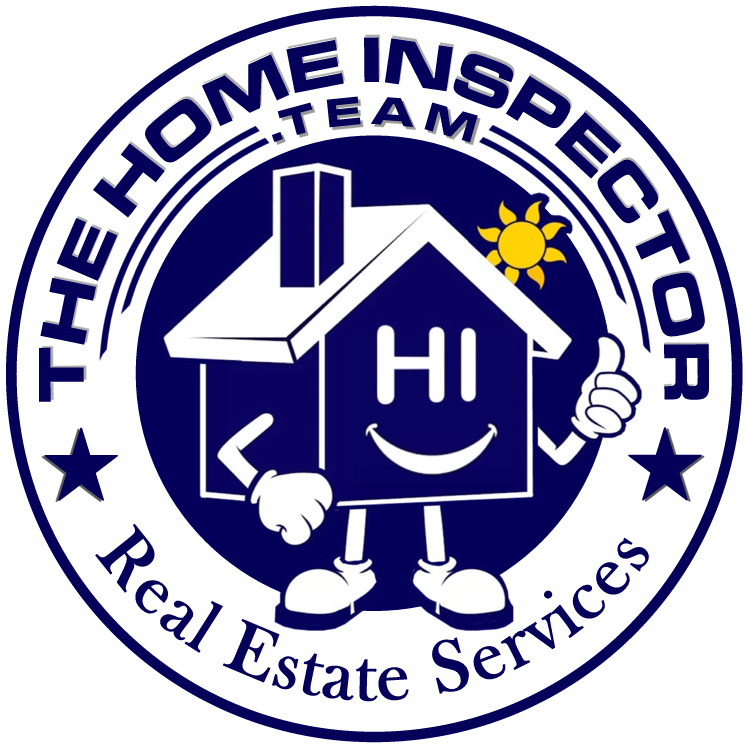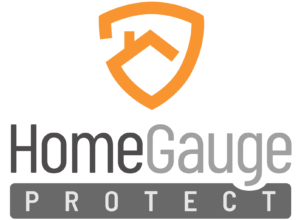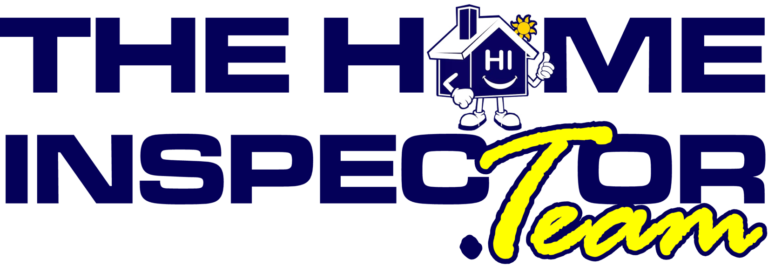What's Included in your Home Inspection
Below is the North Carolina Standards of Practice for Home Inspectors.
This is everything that will and will not be covered in your home inspection. It starts off with the limitations and then goes into the individual systems of the home.
.1102 STANDARDS OF PRACTICE
This Section sets forth the minimum standards of practice required of licensed home inspectors. In this Section, the term “home inspectors” means licensed home inspectors.
.1103 PURPOSE AND SCOPE
- Home inspections performed according to this Section shall provide the client with an understanding of the property conditions, as inspected at the time of the home inspection.
- Home inspectors shall:
- provide a written contract, signed by the client, before the home inspection is performed that shall:
- State that the home inspection is in accordance with the Standards of Practice of the North Carolina Home Inspector Licensure Board as set forth in this Section;
- State what services shall be provided and the cost; and
- When an inspection is for only one or a limited number of systems or components, state that the inspection is limited to only those systems or components;
- inspect readily visible and readily accessible installed systems and components described in Rules .1106 through .1115 of this Section;
- submit a written report, pursuant to G.S. 143-151.58(a), to the client that shall:
- Describe those systems and components required to be described in Rules .1106 through .1115 of this Section;
- State which systems and components present at the home and designated for inspection in this Section were not inspected, and the reason for not inspecting;
- State any systems or components inspected that do not function as intended, allowing for normal wear and tear, or appear not to function as intended, based upon documented tangible evidence;
- Describe each system or component, pursuant to Part (b)(3)(C) of this Rule; state how the condition is defective; explain the implications of defective conditions reported; and direct the client to a course of action for repair, monitoring, or further investigation by a specialist;
- State the name, license number, and signature of the person conducting the inspection.
- submit a summary page(s) pursuant to G.S. 143-151.58(a1).
- Home inspectors may:
- report observations and conditions, including safety or habitability concerns, or render opinions of items in addition to those required in Paragraph (b) of this Rule; or
- exclude systems and components from the inspection if requested by the client, and so stated in the written contract.
.1104 GENERAL LIMITATIONS
- Home inspections done in accordance with this Section are not technically exhaustive.
- This Section applies to buildings with four or fewer dwelling units, and individually owned residential units within multi-family buildings, and their attached garages or carports.
.1105 GENERAL EXCLUSIONS:
- Home inspectors are not required to report on:
- Life expectancy of any component or system;
- The causes of the need for a repair;
- The methods, materials, and costs of corrections;
- The suitability of the property for any specialized use;
- Compliance or non-compliance with codes, ordinances, statutes, regulatory requirements, or restrictions;
- The market value of the property or its marketability;
- The advisability or inadvisability of purchase of the property;
- Any component or system that was not inspected;
- The presence or absence of pests such as wood damaging organisms, rodents, or insects; or
- Cosmetic damage, underground items, or items not installed; or
- The presence or absence of systems installed to control or remove suspected hazardous substances listed in Subparagraph (b)(7) of this Rule.
- Home inspectors are not required to:
- Offer warranties or guarantees of any kind;
- Calculate the strength, adequacy, or efficiency of any system or component;
- Enter any area or perform any procedure that may damage the property or its components or be dangerous to or adversely affect the health or safety of the home inspector or other persons;
- Operate any system or component that is shut down or otherwise inoperable;
- Operate any system or component that does not respond to normal operating controls;
- Move personal items, panels, furniture, equipment, plant life, soil, snow, ice, or debris that obstructs access or visibility;
- Determine the presence or absence of any suspected adverse environmental condition or hazardous substance, including mold, toxins, carcinogens, noise, contaminants in the building or in soil, water, and air;
- Determine the effectiveness of any system installed to control or remove suspected hazardous substances;
- Determine House Energy Ratings (HER), insulation R values, system or component efficiencies;
- Inspect heat recovery and similar whole house ventilation systems;
- Predict future condition, including failure of components;
- Project operating costs of components;
- Evaluate acoustical characteristics of any system or component;
- Inspect equipment or accessories that are not listed as components to be inspected in this Section; or
- Disturb insulation, except as required in Rule .1114 of this Section.
- Home inspectors shall not:
- Offer or perform any act or service contrary to law; or
- Offer or perform engineering, architectural, plumbing, electrical, or any other job function requiring an occupational license in the jurisdiction where the inspection is taking place, unless the home inspector holds a valid occupational license. In that case the home inspector shall inform the client that the home inspector is so licensed, and therefore qualified to go beyond this Section and perform additional inspections beyond those within the scope of the Standards of Practice.
.1106 STRUCTURAL COMPONENTS
- The home inspector shall inspect structural components including:
- Foundation;
- Floors;
- Walls;
- Columns or piers;
- Ceilings; and
- Roofs.
- The home inspector shall describe the type of:
- Foundation;
- Floor structure;
- Wall structure;
- Columns or piers;
- Ceiling structure; and
- Roof structure.
- The home inspector shall:
- Probe structural components where deterioration is suspected;
- Enter under floor crawl spaces, basements, and attic spaces except when access is obstructed, when entry could damage the property, or when dangerous or adverse situations are suspected;
- Report the methods used to inspect under floor crawl spaces and attics; and
- Report signs of abnormal or harmful water penetration into the building or signs of abnormal or harmful condensation on building components.
.1107 EXTERIOR
- The home inspector shall inspect:
- Wall cladding, flashings, and trim;
- Entryway doors and a representative number of windows;
- Garage door operators;
- Decks, balconies, stoops, steps, areaways, porches, and appurtenant railings;
- Eaves, soffits, and fascias;
- Driveways, patios, walkways, and retaining walls; and
- Vegetation, grading, and drainage with respect only to their effect on the condition of the building.
- The home inspector shall:
- Describe wall cladding materials;
- Operate all entryway doors;
- Operate garage doors manually or by using installed controls for any garage door operator;
- Report whether or not any garage door operator will automatically reverse or stop when meeting reasonable resistance during closing; and
- Probe exterior wood components where deterioration is suspected.
- The home inspector is not required to inspect:
- Storm windows, storm doors, screening, shutters, and awnings;
- Fences;
- For the presence of safety glazing in doors and windows;
- Garage door operator remote control transmitters;
- Geological conditions;
- Soil conditions;
- Recreational facilities (including spas, saunas, steam baths, swimming pools, tennis courts, playground equipment, and other exercise, entertainment, or athletic facilities), except as otherwise required in 11 NCAC 8.1109(d)(5)(F);
- Detached buildings or structures; or
- For the presence or condition of buried fuel storage tanks.
.1108 ROOFING
- The home inspector shall inspect:
- Roof coverings;
- Roof drainage systems;
- Flashings;
- Skylights, chimneys, and roof penetrations; and
- Signs of' leaks or abnormal condensation on building components.
- The home inspector shall:
- Describe the type of roof covering materials; and
- Report the methods used to inspect the roofing.
- The home inspector is not required to:
- Walk on the roofing; or
- Inspect attached accessories including solar systems, antennae, and lightning arrestors. October 1, 2018 NC Home Inspector Licensure Board NC General Statutes and NC Administrative Code Page 23 of 40
.1109 PLUMBING
- The home inspector shall inspect:
- Interior water supply and distribution system, including: piping materials, supports, and insulation; fixtures and faucets; functional flow; leaks; and cross connections;
- Interior drain, waste, and vent system, including: traps; drain, waste, and vent piping; piping supports and pipe insulation; leaks; and functional drainage;
- Hot water systems including: water heating equipment; normal operating controls; automatic safety controls; and chimneys, flues, and vents;
- Fuel storage and distribution systems including: interior fuel storage equipment, supply piping, venting, and supports; leaks; and
- Sump pumps.
- The home inspector shall describe:
- Water supply and distribution piping materials;
- Drain, waste, and vent piping materials;
- Water heating equipment, including fuel or power source, storage capacity or tankless point of use demand systems, and location; and
- The location of any main water supply shutoff device.
- The home inspector shall operate all plumbing fixtures, including their faucets and all exterior faucets attached to the house, except where the flow end of the faucet is connected to an appliance.
- The home inspector is not required to:
- State the requirement for or effectiveness of anti-siphon devices;
- Determine whether water supply and waste disposal systems are public or private or the presence or absence of backflow devices;
- Operate automatic safety controls;
- Operate any valve except water closet flush valves, fixture faucets, and hose faucets;
- Inspect:
- Water conditioning systems;
- Fire and lawn sprinkler systems;
- On-site water supply quantity and quality;
- On-site waste disposal systems;
- Foundation irrigation systems;
- Bathroom spas, whirlpools, or air jet tubs except as to functional flow and functional drainage;
- Swimming pools;
- Solar water heating equipment; or
- Fixture overflow devices or shower pan liners;
- Inspect the system for proper sizing, design, or use of materials.
- Report on the absence or presence of thermal expansion tanks; or,
- Report on the adequacy of the reported water heater capacity.
.1110 ELECTRICAL
- The home inspector shall inspect:
- Electrical service entrance conductors;
- Electrical service equipment, grounding equipment, main overcurrent device, and interiors of panelboard enclosures unless unsafe conditions are reported;
- Amperage and voltage ratings of the electrical service;
- Branch circuit conductors, their overcurrent devices, and the compatibility of their ampacities at the interiors of panelboard enclosures unless unsafe conditions are reported;
- The operation of a representative number of installed ceiling fans, lighting fixtures, switches, and receptacles located inside the house, garage, and on the dwelling’s exterior walls;
- The polarity and grounding of all receptacles within six feet of interior plumbing fixtures, and all receptacles in the garage or carport, and on the exterior of inspected structures;
- The operation of ground fault circuit interrupters; and
- Smoke detectors and installed carbon monoxide alarms.
- The home inspector shall describe:
- Electrical service amperage and voltage;
- Electrical service entry conductor materials;
- The electrical service type as being overhead or underground; and
- The location of main and distribution panels.
- The home inspector shall report in writing the presence of any readily accessible single strand aluminum branch circuit wiring.
- The home inspector shall report in writing on the presence or absence of smoke detectors, and installed carbon monoxide alarms in any homes with fireplaces, fuel fired appliances, or attached garages, and operate their test function, if readily accessible, except when detectors are part of a central system.
- The home inspector is not required to:
- Insert any tool, probe, or testing device inside the panels;
- Test or operate any overcurrent device except ground fault circuit interrupters;
- Dismantle any electrical device or control other than to remove the covers of panelboard enclosures; or
- Inspect:
- Low voltage systems;
- Security systems and heat detectors;
- Telephone, security, cable TV, intercoms, or other ancillary wiring that is not a part of the primary electrical distribution system;
- Built-in vacuum equipment;
- Back up electrical generating equipment;
- Other alternative electrical generating or renewable energy systems such as solar, wind, or hydro power;
- Battery or electrical automotive charging systems; or
- Electrical systems to swimming pools or spas, including bonding and grounding.
.1111 HEATING
- The home inspector shall inspect permanently installed heating systems including:
- Heating equipment;
- Normal operating controls;
- Automatic safety controls;
- Chimneys, flues, and vents, where readily visible;
- Solid fuel heating devices;
- Heat distribution systems including fans, pumps, ducts and piping, with supports, insulation, air filters, registers, radiators, fan coil units, convectors; and
- The presence or absence of an installed heat source for each habitable space.
- The home inspector shall describe the:
- Energy source; and
- Heating equipment and distribution type.
- The home inspector shall operate the systems using normal operating controls appropriate to weather conditions at the time of the inspection.
- The home inspector shall open readily openable access panels provided by the manufacturer or installer for routine homeowner maintenance. The home inspector shall report the method of inspection used to inspect the heating system and whether or not access panels were removed.
- The home inspector is not required to:
- Operate heating systems when weather conditions or other circumstances may cause equipment damage or when inappropriate to weather conditions at the time of inspection;
- Operate automatic safety controls;
- Ignite or extinguish solid fuel fires; or
- Ignite a pilot light; or
- Inspect:
- The interior of flues;
- Fireplace insert flue connections;
- Heat exchanges;
- Humidifiers;
- Electronic air filters;
- The uniformity or adequacy of heat supply to the various rooms; or
- Solar space heating equipment.
.1112 AIR CONDITIONING
- The home inspector shall inspect:
- Central air conditioning and through-the-wall ductless installed cooling systems including:
- Cooling and air handling equipment; and
- Normal operating controls.
- Cooling distribution systems including:
- Fans, pumps, ducts and piping, with associated supports, dampers, insulation, air filters, registers, fancoil units; and
- The presence or absence of an installed cooling source for each habitable space.
- The home inspector shall describe the:
- Energy sources; and
- Cooling equipment type.
- The home inspector shall operate the systems using normal operating controls appropriate to weather conditions at the time of the inspection.
- The home inspector shall open readily openable access panels provided by the manufacturer or installer for routine homeowner maintenance. The home inspector shall report the method used to inspect the air conditioning system and whether or not access panels were removed.
- The home inspector is not required to:
- Operate cooling systems when weather conditions or other circumstances may cause equipment damage;
- Inspect window air conditioners; or
- Inspect the uniformity or adequacy of cool-air supply to the various rooms.
.1113 INTERIORS
- The home inspector shall inspect:
- Walls, ceiling, and floors;
- Steps, stairways, balconies, and railings;
- Counters and a representative number of built-in cabinets; and
- A representative number of doors and windows.
- The home inspector shall:
- Operate a representative number of windows and interior doors; and
- Report signs of water penetration into the building or signs of abnormal or harmful condensation on building components.
- The home inspector is not required to inspect:
- Paint, wallpaper, and other finish treatments on the interior walls, ceilings, and floors;
- Carpeting; or
- Draperies, blinds, or other window treatments; or
- Coatings on and hermetic seals between panes of glass in windows and doors.
.1114 INSULATION AND VENTILATION
- The home inspector shall inspect:
- Insulation and vapor retarders in unfinished spaces;
- Ventilation of attics and foundation areas;
- Kitchen, bathroom, and laundry venting systems; and
- The operation of any readily accessible attic ventilation fan, and, when temperature permits, the operation of any readily accessible thermostatic control.
- The home inspector shall describe:
- Insulation in unfinished spaces; and
- The absence of insulation in unfinished space at conditioned surfaces.
- The home inspector is not required to report on:
- Concealed insulation and vapor retarders; or
- Venting equipment for household appliances that are not required to be inspected pursuant to the North Carolina Home Inspector Standards of Practice.
- The home inspector shall:
- Move insulation where readily visible evidence indicates a problem; and
- Move floor insulation where plumbing drain/waste pipes penetrate floors, adjacent to earth-filled stoops or porches, and at exterior doors.
.1115 BUILT-IN KITCHEN APPLIANCES
- The home inspector shall inspect and operate the basic functions of the following kitchen appliances:
- Installed dishwasher(s), through a complete cycle;
- Range(s), cook top(s), and permanently installed oven(s);
- Trash compactor(s);
- Garbage disposal(s);
- Ventilation equipment or range hood(s); and
- Installed microwave oven(s).
- The home inspector is not required to inspect:
- Clocks, timers, self-cleaning oven functions, or thermostats for calibration or automatic operation;
- Non built-in appliances; or
- Refrigeration units.
- The home inspector is not required to operate:
- Appliances in use; or
- Any appliance that is shut down or otherwise inoperable.


Includes our Inspector Guarantee when Closing on an older home
